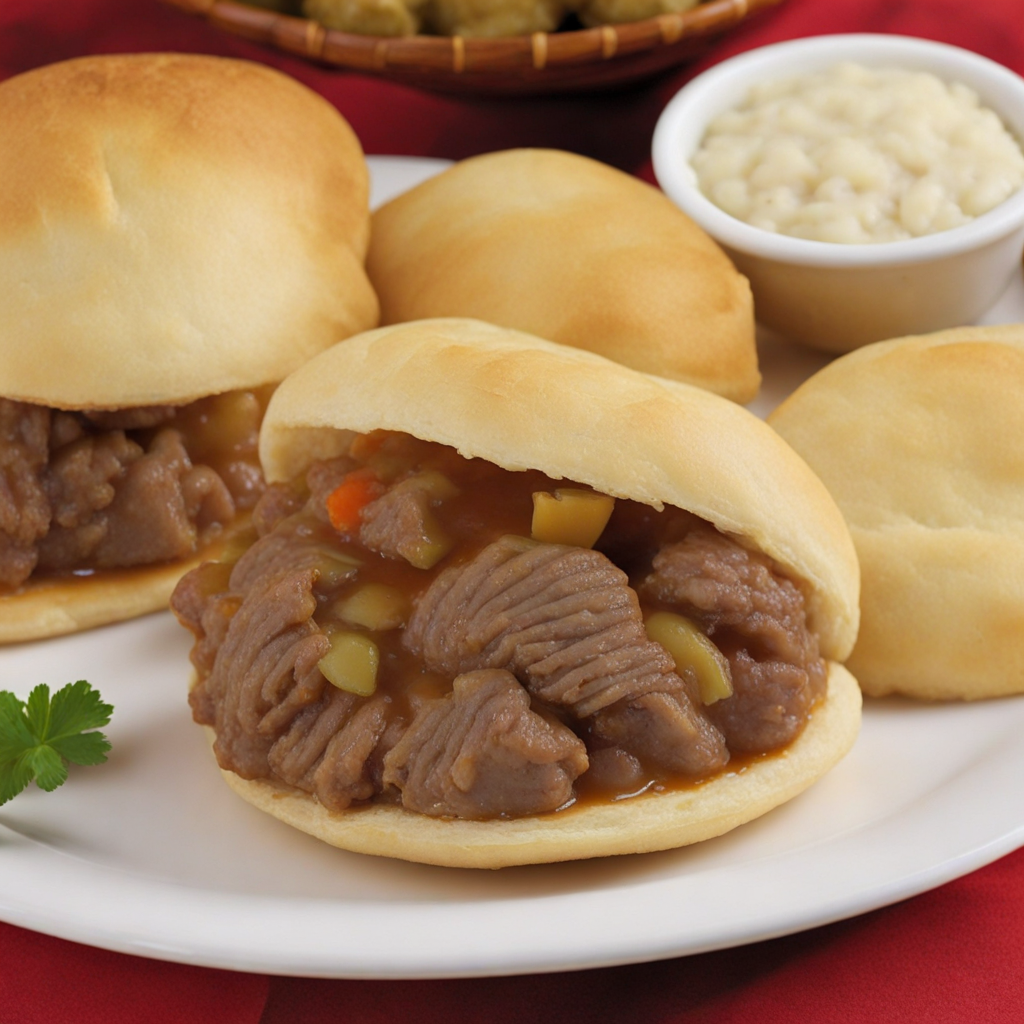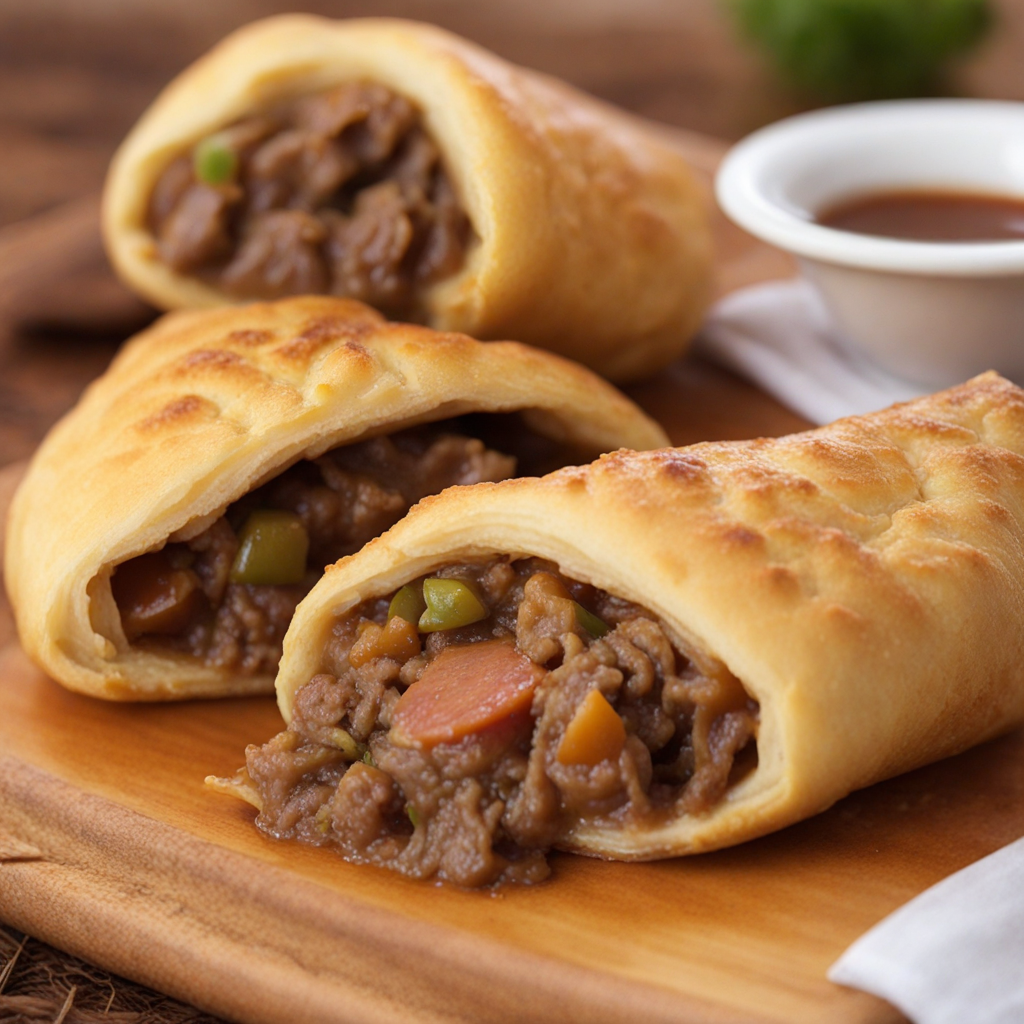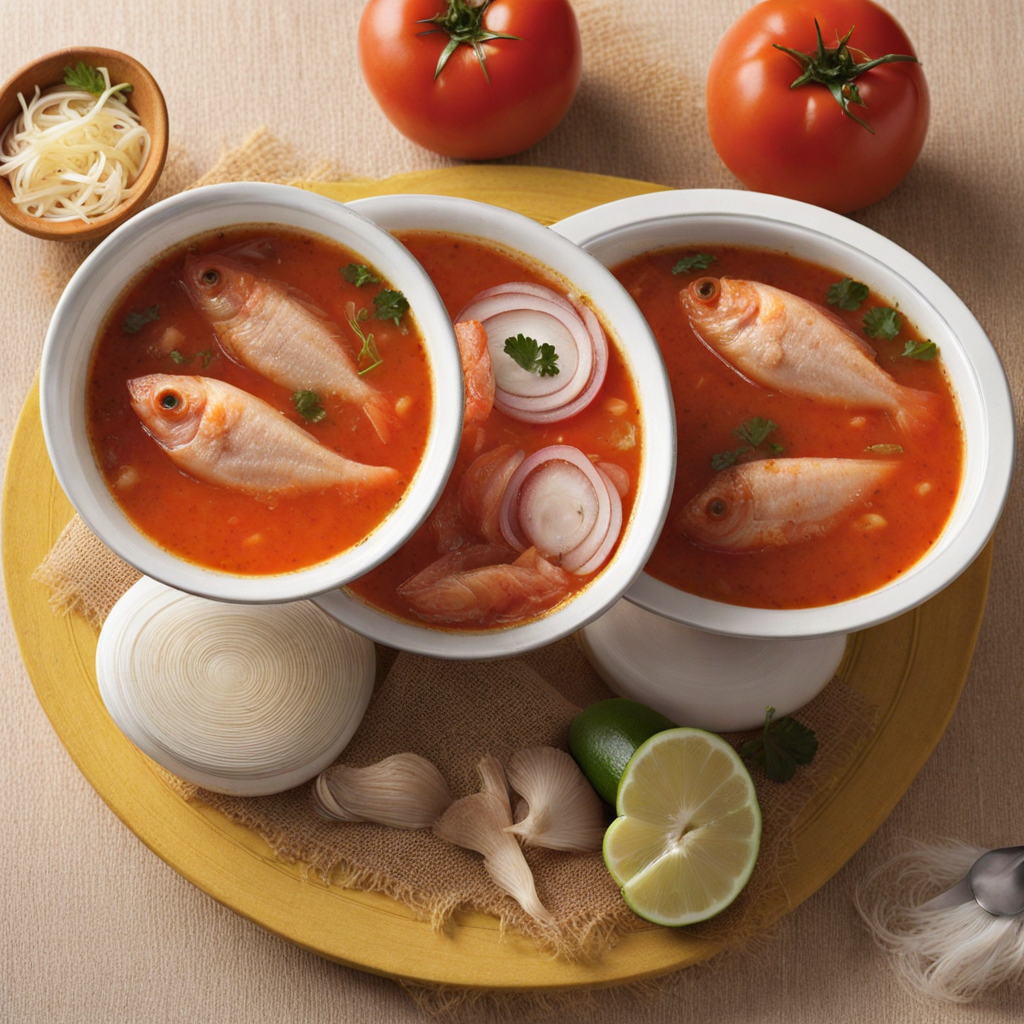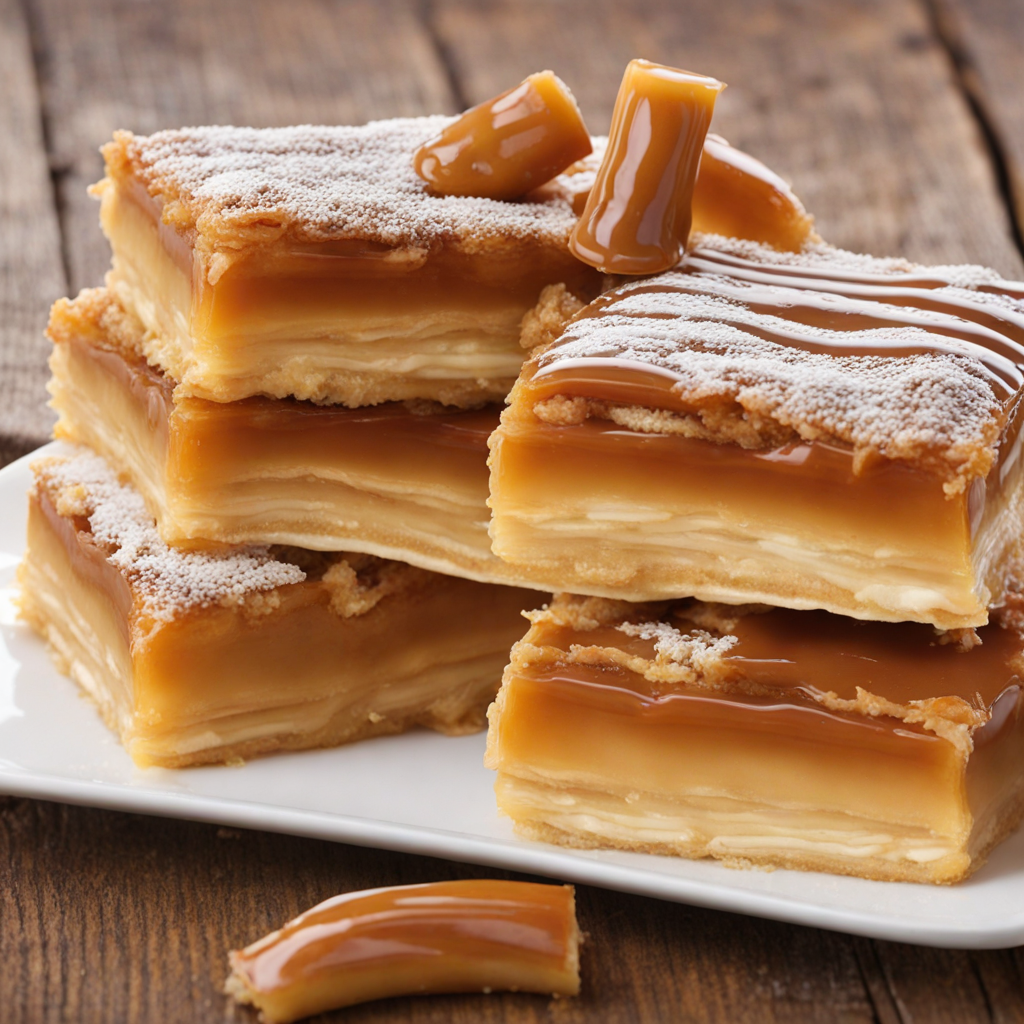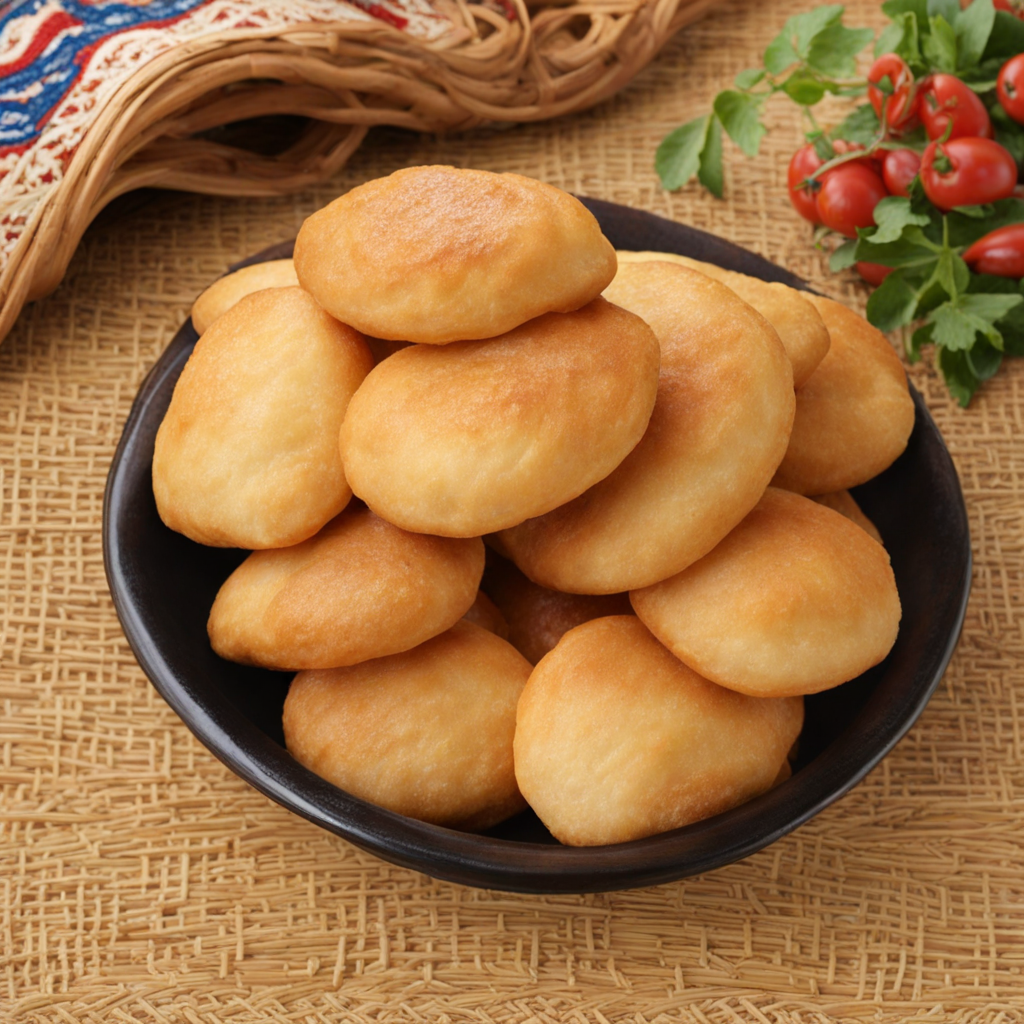Chipa So’o Josopy
Chipa So’o Josopy is a delightful traditional dish from Paraguay that showcases the country's rich culinary heritage. At its core, this flavorful treat combines the beloved Chipa, a type of cheese bread made from manioc flour, with a savory filling that typically includes seasoned meats, such as beef or pork. The name "Chipa So’o" translates to "bread with meat," and the dish is often enhanced with onions, cheese, and a variety of spices, creating a satisfying blend of textures and flavors that is both hearty and comforting. When you take a bite of Chipa So’o Josopy, the first thing you’ll notice is the warm, chewy exterior that encases the rich, juicy filling. The combination of the manioc flour dough and the melted cheese results in a delightful chewiness that contrasts beautifully with the tender meat inside. The seasoning of the meat, often infused with garlic, cumin, and pepper, adds a depth of flavor that elevates the dish to new heights. Each mouthful is an experience, as the flavors meld together harmoniously, showcasing the culinary traditions of Paraguay. This dish is typically enjoyed as a snack or a light meal, making it perfect for sharing during gatherings or celebrations. Whether served warm from the oven or at room temperature, Chipa So’o Josopy is a testament to the simplicity and richness of Paraguayan cuisine. With its unique blend of ingredients and flavors, this dish invites food lovers to explore the vibrant tastes of Paraguay, offering a satisfying and memorable culinary adventure.
How It Became This Dish
Chipa So’o Josopy: A Culinary Journey Through Paraguay #### Origins of Chipa So’o Josopy Chipa So’o Josopy is a traditional Paraguayan dish that reflects the rich cultural tapestry of the nation, intertwining indigenous influences with Spanish colonial elements. The origins of Chipa So’o can be traced back to the Guarani people, the indigenous inhabitants of the region now known as Paraguay. This community had a profound relationship with maize, which served as a staple in their diet. The word "chipa" itself comes from the Guarani language, where it means “bread” or “cake,” highlighting the deep roots of this dish within indigenous culinary traditions. The basic components of Chipa So’o reflect the significance of maize in Guarani culture. Traditionally, it was made with manioc flour, which is derived from cassava, and a combination of cheese, eggs, and milk. The dish's evolution came with the arrival of the Spanish colonizers in the 16th century, who introduced new ingredients and culinary techniques. This fusion of indigenous and European elements laid the groundwork for the diverse array of chipa recipes that are celebrated in Paraguay today. #### The Cultural Significance of Chipa So’o Josopy Chipa So’o Josopy is more than just a food item; it is a symbol of national identity and communal gatherings in Paraguay. This dish is particularly associated with the country's religious festivals and family celebrations, especially during Holy Week. It is commonly prepared for gatherings, serving as a comforting snack or appetizer that fosters a sense of community and togetherness. Traditionally, Chipa So’o is made as a type of baked cheese bread, with its texture being soft and chewy. The addition of meat, which is characteristic of Chipa So’o, distinguishes it from other variations of chipa. Ground beef or pork is mixed into the dough, which often includes ingredients like cheese, eggs, and milk, creating a savory flavor profile. This hearty version of chipa reflects the Paraguayan penchant for combining simple ingredients to create satisfying and nourishing meals. In Paraguayan culture, food plays a crucial role in social interactions and celebrations. Chipa So’o is often enjoyed during festive occasions, where it is shared among family and friends. Its presence at gatherings signifies hospitality and warmth, embodying the spirit of sharing that is deeply ingrained in the culture. #### Development Over Time As Paraguay has evolved, so too has the preparation of Chipa So’o Josopy. While the fundamental recipe has remained consistent, regional variations have emerged, influenced by local ingredients and culinary practices. For instance, in some areas, the use of different types of cheese, such as Paraguay's famous "queso paraguayo," enhances the flavor and texture of the dish. Additionally, variations in the type of meat used, from chicken to more exotic options, reflect local preferences and availability. The cooking techniques have also evolved. Traditionally, Chipa So’o was baked in a clay oven, which imparted a unique flavor and texture to the bread. Today, modern ovens are typically used, although some artisans still adhere to traditional methods, believing that the authenticity of the dish is preserved through age-old techniques. This balance between tradition and modernity allows for the continued appreciation of Chipa So’o Josopy while adapting to contemporary cooking practices. The rise of the global food movement has also contributed to the growing popularity of Chipa So’o beyond Paraguay. As more people become interested in exploring diverse cuisines, traditional Paraguayan dishes are being introduced to international palates. Food festivals, cultural showcases, and online platforms have facilitated this exchange, allowing Chipa So’o to gain recognition on a global scale. Chefs and home cooks alike are experimenting with the dish, incorporating elements of fusion cuisine that blend traditional Paraguayan flavors with international influences. #### Modern Interpretations and Global Recognition In recent years, there has been a resurgence of interest in traditional Paraguayan foods, driven by a growing appreciation for authentic culinary experiences. Chipa So’o Josopy has emerged as a favorite among chefs and food enthusiasts who admire its versatility and rich heritage. Contemporary interpretations might include variations such as adding herbs or spices to enhance the flavor profile or experimenting with gluten-free options by using alternative flours. Social media and food blogs have played a significant role in popularizing Chipa So’o. Photographs of this delightful dish, often served at family gatherings or cultural events, have captured the attention of a wider audience. Influencers and culinary experts have begun to showcase Chipa So’o not just as a traditional dish but as a symbol of Paraguay's vibrant food culture. In culinary competitions and events celebrating Latin American cuisine, Chipa So’o has often taken center stage, showcasing the creativity and skill of chefs who honor its traditional roots while pushing the boundaries of its presentation and ingredients. This attention has helped elevate the dish into the spotlight, allowing it to be appreciated not only as a staple of Paraguayan cuisine but also as a representation of the nation’s cultural heritage. #### Conclusion: The Legacy of Chipa So’o Josopy Chipa So’o Josopy stands as a testament to the rich culinary history of Paraguay, embodying the fusion of indigenous and colonial influences that characterize the nation’s food culture. Its journey from traditional indigenous roots to modern interpretations reflects the resilience and adaptability of Paraguayan cuisine. As it continues to evolve and gain recognition on the global stage, Chipa So’o remains a cherished symbol of community, tradition, and the enduring spirit of Paraguay. In exploring the history and significance of Chipa So’o Josopy, one can appreciate not just a dish but a cultural narrative that binds the people of Paraguay to their ancestry, their land, and each other. Through shared meals and communal celebrations, Chipa So’o serves as a delicious reminder of the power of food to connect us to our history and to one another.
You may like
Discover local flavors from Paraguay


